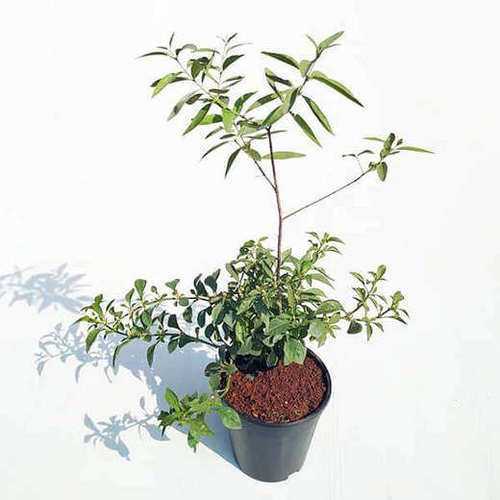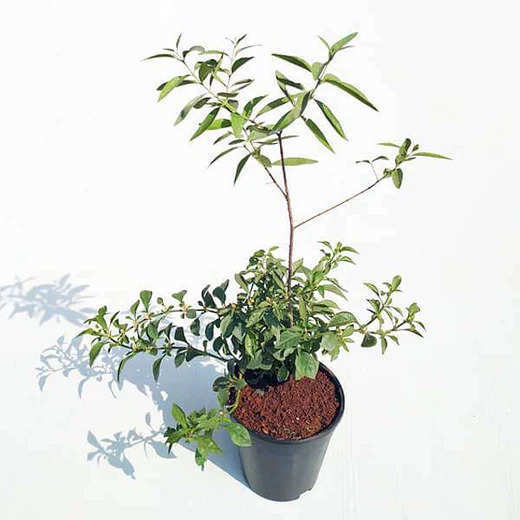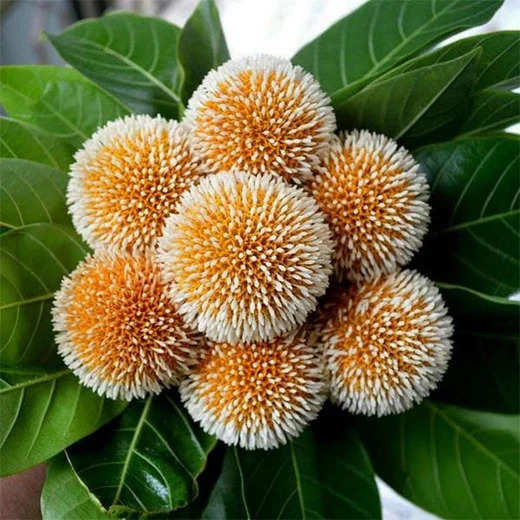

Sure, money doesn't grow on plants; you have to work hard to earn a living. However, there are certain plants that are considered a source of positive energy and prosperity. Furthermore, plants spread greenery, clean air, and love around the house.

Listed below are Top 10 plants to bring money and that could also help you maintain ecological balance:
1. White Sandalwood or Chandan Tree
The White Sandalwood is a 10 to 30 feet tall shrub. It has bulky, yellow-coloured flowers. Its fine-grained, aromatic wood is one of the most expensive woods across the world. Sandalwood is used in aromatherapy, and for making oil and soaps. Its soft and soothing fragrance has mind-relaxing properties.
Sandalwood or Chandan is considered auspicious in Hindu, Buddhist, Jain, and Sufi religion. According to Hindu mythology, goddess Lakshmi (god of wealth) resides in the sandalwood or Chandan tree. Thus, people believe that its plantation around the house attracts money and prosperity.
2.Teakwood or Sagwan Plant
Teakwood or Sagwan is a deciduous tree with large, papery leaves. Its wood has a leathery smell when freshly milled. It has a golden or medium brown colour, which darkens with age.
Sagwan's wood is famous across continents for its high durability and water resistant properties. Teakwood is also used to make furniture because it has high tensile strength, oil content, tight grain, and weather resistance.
3. Oak Plant
Oaks are the hardwood trees with over 600 living species. They are popular for their sturdy wood and acorns (seeds). Oak's wood is used for the construction of fences, railroad ties, cabinets, floors, and posts.
Greek mythology regards oak as the tree of Zeus, the King of Gods. On the other hand, in Norse mythology, oak is considered sacred to Thor, the god of thunder.
It was also worshiped by the Indo-European tribes of pre-historic era. Thus, planting them in the garden brings the blessings of thunder and lightning gods.
4. Sheesham or Indian Rosewood Tree
Sheesham, more popularly known as Indian Rosewood Tree, is a deciduous tree that can grow up to 82 feet in height, and 6 to 10 feet in diameter. It has slightly white or pinkish flowers, and large, leathery leaves.
People also plant Sheesham in the gardens and lawns for landscaping. However, their timber is of prime importance. They are used for making plywood, and musical and agricultural tools.
5. Kadamba or Anthocephalus cadamba
Kadamba is a tropical tree with bright yellow or orange colored flowers. They have a large, wide crown and fast growing thin branches that spread more quickly in initial 6 to 8 years.
Kadamba leaves are used as fodder for cattle. Its wood has great utility for manufacturing handsheets, plywood, and canoes.
Kadamba has mythological significance in the Hindu religion. It is said that this tree represents Shatabhisha, one of the 27 nakshatras. North Indians believe that Radha and Krishna used to romance around the Kadamba tree; while South Indians associate it with goddess Parvati. Hence, keeping the Kadamba plant in the garden supposedly draws love, affection and money towards the house.
6. Casuarina equisetifolia or Australian Pine Tree
Casuarina equisetifolia is a seashore tree of up to 100 feet in height. It is more commonly popular as the Australian Pine tree, or the Whistling Pine tree. Its species is named equisetifolia because of the horse tail-like appearance of leaves.
Casuarina equisetfolia's wood is easily breakable. Hence, it is used as fuel instead of construction, making it perfect for those bonfire nights.
Australian Pine plants thrive well in full sun and can adapt to all types of soil like sandy, loamy, alkaline and clay. These plants are usually grown as an ornamental to adorn any space.
7. Liriodendron or Tulip Tree
Liriodendrons are widely popular as tulip trees because their flowers are very similar to tulips in resemblance. They are 60 to 90 feet tall, and have a pyramid-shaped, broad conical structure.
The name of Liriodendron is derived from two Greek words: leirion (meaning lily) and dendron (meaning tree for the flowers).
Its beautiful, yellowish-orange colored flowers are the main attraction of this plant. However, sometimes they get hidden under the large busy leaves. They can be planted in the gardens for landscape, shade, and the auspicious belief that tulip plants attract money.
8. Leucaena leucocephala or Subabool
Leucaena Leucocephala or Subabool is an evergreen shrub, approximately 2 to 10 meters in height. Its wood is used for making charcoal, paper pulp, and small furniture.
Seeds of Subabool are crafted into a fine piece of jewellery. They are also considered an alternative to coffee. Leucaen Leucocephala was popular as a miracle tree during the 1970's-80's because of its multiple uses and beliefs of attracting money.
9. Alstonia Scholaris or Dita Tree or Saptaparni
Alstonia Scholaris are evergreen trees of medium height. They are believed to have originated from the moist forests of the Himalayas. Saptaparni is also known as the blackboard tree, because its bark was used as blackboard and slates during ancient times.
Rabindranath Tagore started the tradition of gifting Saptaparni's leaves to scholars and teachers during the convocation ceremony. Since then, this plant has a high reputation in the intellectual circle. Some tribes also call it the devil's tree, and avoid sitting in its shade.
10. Melia Dubia
Melia Dubia is mostly found in evergreen, deciduous, and semi-evergreen forests. It is regarded as a boon for farmers because of low maintenance requirements and high market price.
Melia dubia is also very beneficial for the environment. It controls the rise in temperature, and absorbs high amounts of CO2.